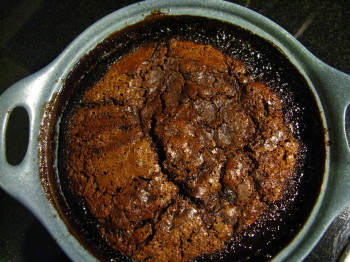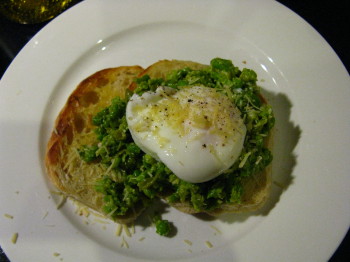In case you’re wondering, a vague nerdy interest in the scientific side of things (informed, unfortunately, by nothing beyond high school classes!) is a large part of what’s keeping me motivated on this Elimination Diet. It’s been over a month now of keeping a strict food diary, and there have been some results. But culinarily and socially, our family’s eating has been less than exciting. I did enjoy doing a couple of the food challenges: the first week, I got to reintroduce salicylates, which, among other things, meant I could have herbs and spices again. As you would imagine, I went crazy – making cajun this and pilaf that – and when I then rang my dietician to ask about some strange things my body was doing, she said: you sound toxic; you must stop. Oh dear. The second challenge was better: for amines, I had to eat chocolate every day! Needless to say, that was fun, and happily my body did not protest (as much).
But what I’ve been trying to do is to refine some core recipes that comply with the requirements of the bare-bones elimination diet that I can use when I feel the need to detox again. I returned to an adaptation of a Moosewood favourite that we first tried in the autumn. It’s hard to make pea soup look appealing, but it sure is tasty and nourishing, and uses very few ingredients. I just made a up a huge lot that will keep me going in lunches all week.
Meanwhile, wish me luck as I try out glutamates (MSG being one of the better known incarnations of this chemical). I’m hoping that I don’t react because I so want to continue to be able to eat mushrooms and parmesan cheese (which contain naturally-occurring glutamates), not to mention eating Chinese food again! So have a go with some pea soup for now and cross your fingers for me!
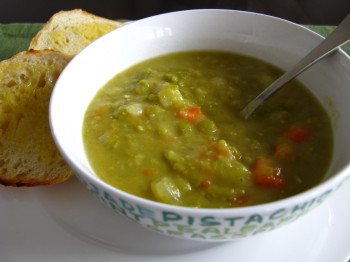
Split pea and vegetable soup
Adapted from Moosewood Cookbook Classics
1 tbsp butter
1 large leek, white part only, finely sliced
2 large garlic cloves, roughly chopped
3 carrots, cut into 1.5cm chunks
2 medium potatoes, peeled and cut into 1.5cm chunks
2 cups dry split peas
about 1.25L water
Heat the butter in a large saucepan. When the butter has melted, add in the leek, carrot and potato. Saute on low-medium heat to sweat the vegetables. It should take about 10-12 minutes until they are aromatic and the leek is completely soft but not coloured. Add in the garlic and saute for 1 or 2 minutes more.
Then add in all the split peas and the water. Bring to the boil, then simmer gently for about an hour, stirring occasionally to help the peas break down. You might need to add more water as needed. Season to taste.
Yield: serves 6
 – roasted beetroot and goats cheese frittata
– roasted beetroot and goats cheese frittata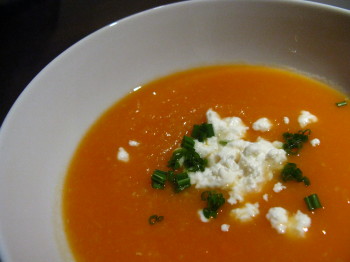
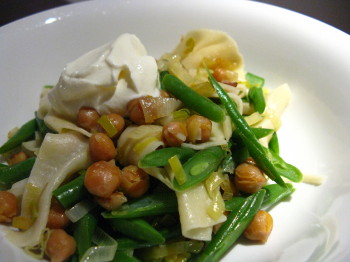


 Take 1: Simple pumpkin soup with sage
Take 1: Simple pumpkin soup with sage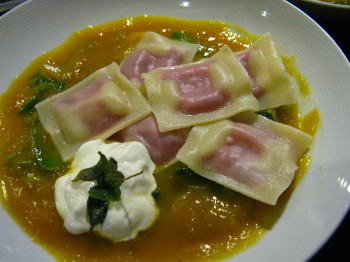
 And if you may be starting to think that our house seems to have been a house of desserts of late, you are right. On that note I would like to say my warm thanks for supporting
And if you may be starting to think that our house seems to have been a house of desserts of late, you are right. On that note I would like to say my warm thanks for supporting 